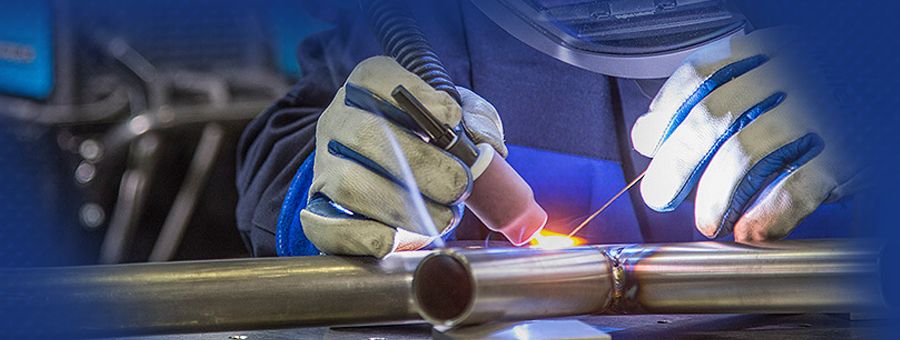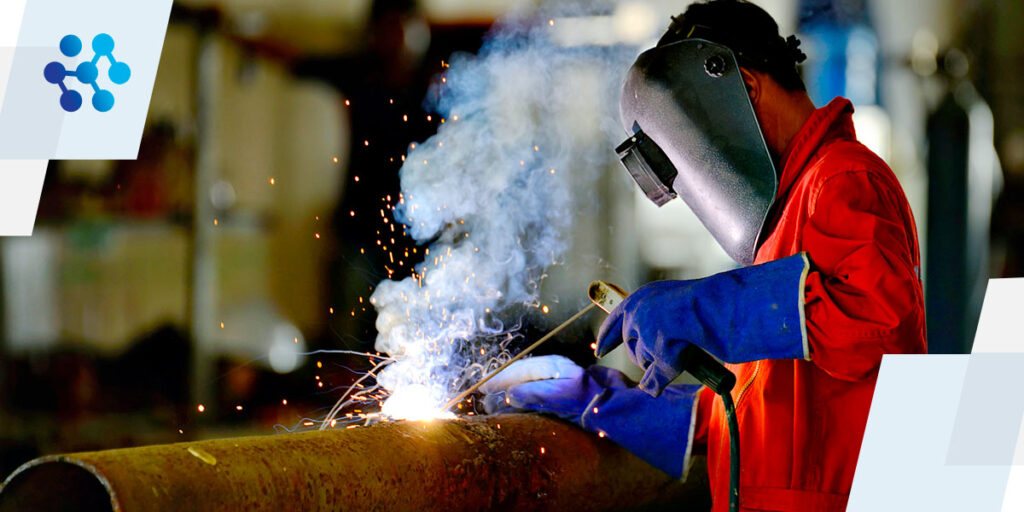Ways to minimize distortion in Montana Mobile Welding and Repair Welding projects
Wiki Article
Common Welding Repair Service Issues and Just How to Address Them Effectively
Welding repair work usually encounter an array of problems that can threaten the honesty of the final item. Usual troubles include inadequate penetration, porosity, and misalignment, among others. Each problem offers special difficulties that need specific techniques for resolution. Recognizing these concerns is vital for welders aiming to boost their abilities and outcomes. This conversation will check out these typical welding repair problems and reliable techniques to resolve them.Poor Infiltration
Inadequate penetration takes place when the weld steel stops working to completely fuse with the base material, causing weak joints and possible architectural failings. This problem frequently comes from not enough heat input, incorrect electrode angle, or improper welding rate. Welders may encounter inadequate infiltration due to a mistake of the essential specifications for a details product density or type. Additionally, contamination on the base product's surface area can prevent effective bonding, exacerbating the issue. To attend to poor infiltration, welders ought to assure ideal setups on their devices and keep a clean job surface area. Regular assessment of welds is recommended to identify any type of shortages early, enabling for prompt improvements and the prevention of jeopardized architectural integrity in welded assemblies.Porosity
Porosity is a typical defect in bonded joints that manifests as little gas bubbles trapped within the weld metal. This defect can jeopardize the integrity of the weld, leading to minimized stamina and potential failing under anxiety. Belgrade Welding. Porosity typically arises from contamination, moisture, or incorrect welding strategies, which allow gases to run away right into the molten weld swimming pool. To attend to porosity, welders should ensure correct surface area preparation, maintain a clean workplace, and make use of ideal welding criteria. Furthermore, choosing the best filler product and protecting gas can alleviate gas entrapment. Normal assessment and screening of welds can assist determine porosity early, guaranteeing prompt restorative actions are taken, therefore protecting the high quality and dependability of the bonded frameworkImbalance
Misalignment in welding can emerge from various factors, including inappropriate arrangement and thermal development. Comprehending the origin causes is important for reliable resolution. Numerous adjustment techniques are offered to straighten elements and guarantee architectural stability.Sources of Misalignment
Welding imbalance usually stems from a range of underlying concerns that can jeopardize architectural stability. One primary cause is improper fit-up of elements before welding, which can bring about gaps and uneven surfaces. Variations in thermal growth throughout the welding process can likewise lead to distortion, especially if the products being signed up with have different coefficients of development. Additionally, poor fixturing and clamping may fail to hold elements securely in location, resulting in activity during welding. Inadequately kept equipment, consisting of welding machines and devices, may present variances in the weld grain, further contributing to misalignment. Driver mistake, stemming from not enough training or experience, can likewise play a significant function in creating misaligned welds.
Adjustment Methods Available
Addressing misalignment effectively requires a mix of corrective techniques customized to the specific issues available. One common approach is making use of jigs or fixtures to hold components in the correct position throughout welding, making certain regular positioning. Furthermore, preheating the products can help in reducing distortion and improve fit-up. For considerable misalignment, mechanical adjustment strategies, such as making use of hydraulic jacks or clamps, can be utilized to correct the placement before welding. Post-weld warmth treatment may also be required to ease stresses created by imbalance. Finally, mindful inspection and adjustment during the arrangement phase can stop imbalance problems from coming to be significant problems, advertising a smoother welding process and improving overall architectural honesty.Distortion
Distortion is a typical obstacle in welding that can occur from numerous variables, consisting of uneven heating & cooling. Comprehending the reasons for distortion is crucial for carrying out reliable prevention methods. Resolving this issue not just boosts structural stability yet additionally boosts the total quality of the weld.Sources of Distortion
When subjected to the intense warmth of welding, products commonly undertake changes that can lead to distortion. This sensation primarily occurs from thermal expansion and tightening throughout the welding process. As the weld area warms up, the product increases; upon cooling, it acquires, which can develop inner anxieties. Furthermore, unequal home heating throughout a workpiece can exacerbate these stress and anxieties, causing warping or flexing. The sort of material additionally plays a substantial role; metals with varying thermal conductivity and coefficients of growth might react in different ways, causing unforeseeable distortions. Bad joint layout and insufficient fixturing can contribute to imbalance throughout welding, boosting the probability of distortion. Comprehending these causes is vital for reliable welding fixing and prevention approaches.Prevention Techniques
Efficient avoidance methods for distortion throughout welding focus on managing heat input and making certain correct joint layout. Maintaining a regular warm input assists to decrease thermal development and contraction, which can bring about distortion. Using methods such as pre-heating the work surface can additionally lower the temperature slope, promoting uniform heating. Additionally, selecting appropriate joint designs, such as T-joints or lap joints, can enhance stability and reduce tension concentrations. Carrying out correct fixturing to protect the workpieces in location even more help in keeping alignment throughout the welding process. Lastly, staggered welding series can disperse warmth more uniformly, preventing localized distortion. By applying these techniques, welders can greatly reduce the likelihood of distortion and enhance the general top quality of their welds.Cracking
Fracturing is an usual issue come across in welding repairs, frequently arising from numerous variables such as improper air conditioning prices, material choice, or inadequate joint prep work. The event of splits can significantly compromise the integrity of the weld, resulting in potential failures during procedure. To address this problem, welders have to initially evaluate the root creates, making sure that products work and appropriately selected for the certain application. Furthermore, managing the cooling rate throughout the welding process is important; quick air conditioning can induce anxiety and result in breaking. Proper joint design and prep work likewise add to decreasing the threat. Implementing these approaches can enhance weld top quality and resilience, inevitably decreasing the chance of cracking in finished weldments.
Incomplete Fusion
A significant concern in welding fixings check that is incomplete blend, which takes place when the weld steel does not effectively bond with the base product or previous weld passes - Montana Mobile Welding and Repair Welding. This problem can cause weaknesses in the joint, potentially endangering the honesty of the bonded structure. Factors adding to insufficient combination consist of inadequate heat input, improper welding strategy, and contamination of the surfaces being joined. To address this issue properly, welders must ensure correct pre-weld cleaning and surface preparation, in addition to change their welding specifications to accomplish ample penetration and combination. Regular inspection throughout the welding procedure can also assist identify incomplete fusion early, enabling for prompt corrective steps to improve the general top quality of the weldOverheating
While welding repair services can enhance structural stability, overheating offers a substantial challenge that can cause product deterioration. Excessive heat throughout welding can modify the mechanical homes of steels, causing minimized toughness, enhanced brittleness, and warping. This sensation is particularly crucial in high-stress applications where architectural dependability is paramount. Determining getting too hot can include visual inspections for staining or distortion, as well as keeping track of temperature during the welding procedure. To alleviate the threats connected with overheating, welders must utilize proper techniques, such as managing warmth input, adjusting travel rate, and making use of suitable filler products. Additionally, executing pre- and post-weld heat treatments can aid bring back product residential properties and boost the overall quality of the repair, ensuring long-term performance and safety.Regularly Asked Concerns
What Are the Usual Signs of a Welding Problem?

Just How Can I Test My Welds for Quality?
To test welds for high quality, one can make use of visual assessments, ultrasonic testing, and radiographic approaches. Each strategy guarantees structural integrity, determines issues, and verifies adherence to defined criteria, eventually boosting the dependability of the welded joints.What Safety Preventative Measures Should I Take While Welding?
When welding, one should focus on security by wearing suitable individual safety devices, ensuring proper ventilation, protecting combustible products away, keeping a tidy work space, and recognizing environments to avoid crashes and injuries.Can I Fix a Weld Without Redoing the Entire Joint?
Fixing a weld without renovating the whole joint is feasible, relying on the damage (Montana Mobile Welding and Repair Belgrade Fabrication). Methods such as grinding, including filler material, or making use of a welding procedure can successfully address details problems while preserving the surrounding structureWhat Equipment Are Crucial for Reliable Welding Fixes?
Vital tools for efficient welding repair work include a welding maker, cable brush, grinder, protective equipment, clamps, and filler materials. Each tool plays a vital duty in guaranteeing top quality and security throughout the repair procedure. Porosity commonly occurs from contamination, moisture, or incorrect welding techniques, which enable gases to escape right into the Check This Out liquified weld swimming pool. Badly kept devices, including welding equipments and tools, might present incongruities in the weld grain, more contributing to imbalance. When subjected to the intense heat of welding, products often go through changes that can lead to distortion. Splitting is a common problem come across in welding repair work, typically resulting from numerous elements such as improper air conditioning prices, product choice, or inadequate joint preparation. A considerable concern in welding repair work is incomplete blend, which takes place when the weld metal does not effectively bond with the base material or previous weld passes.Report this wiki page